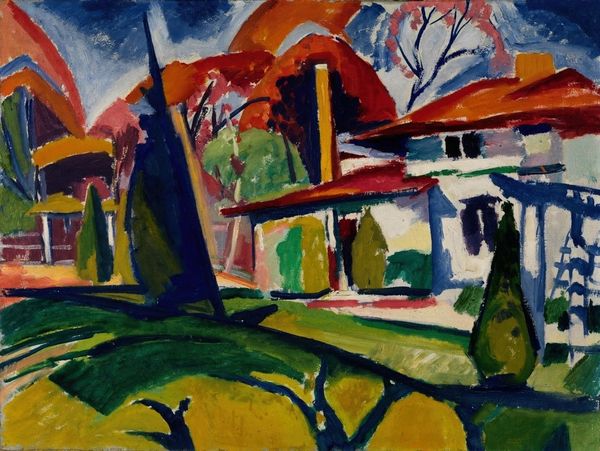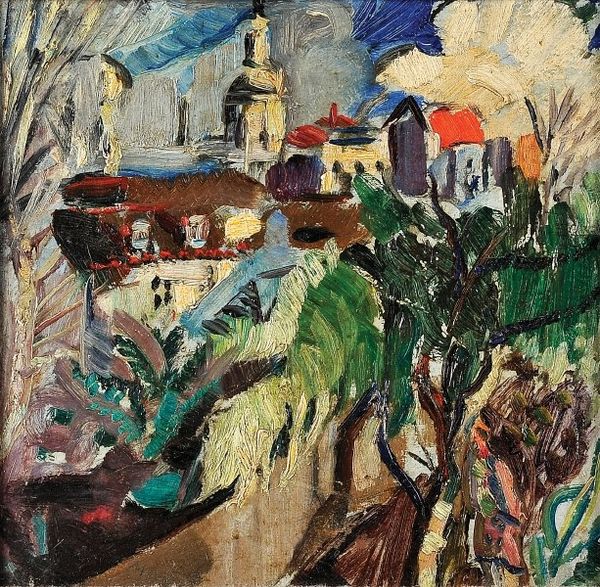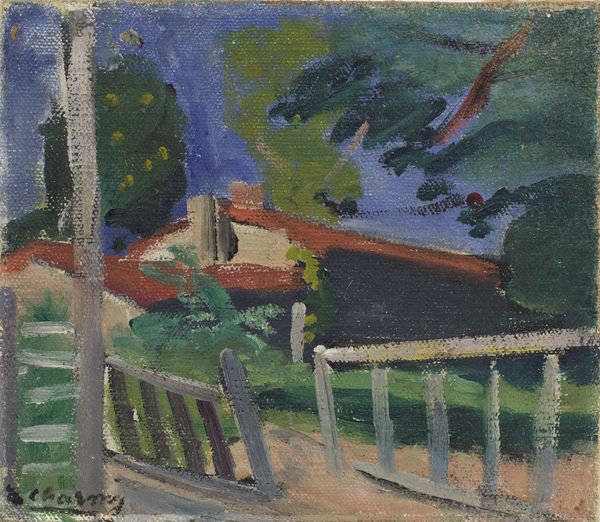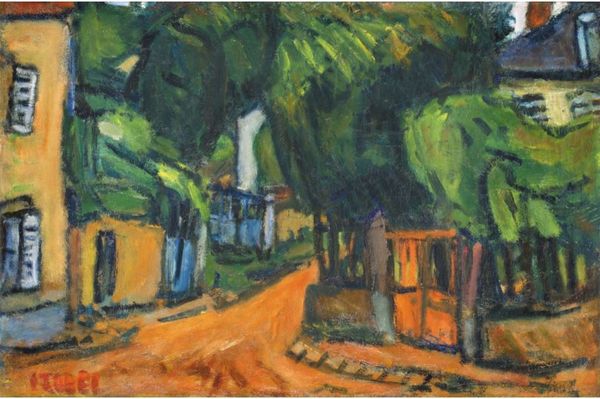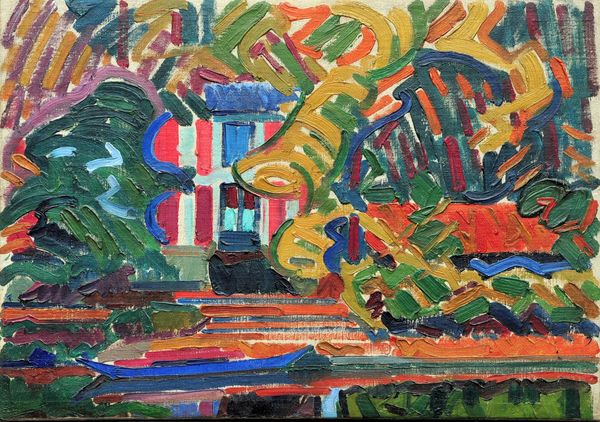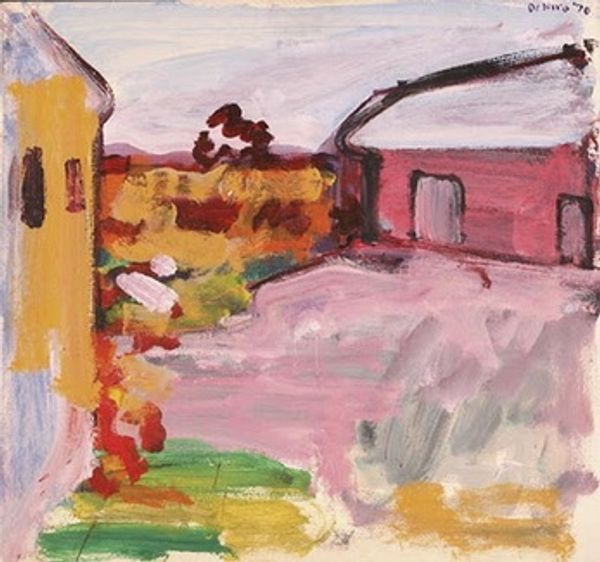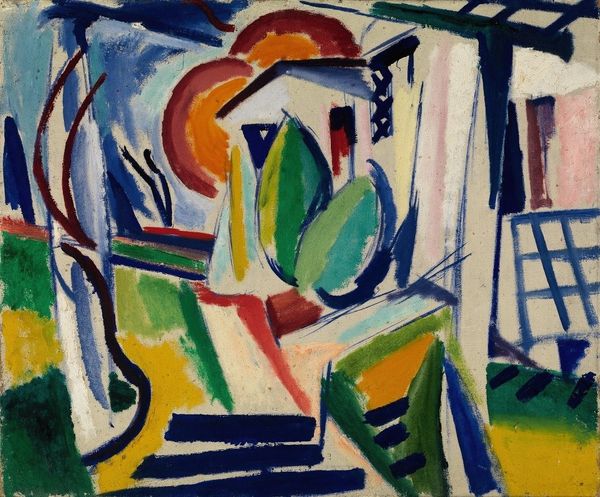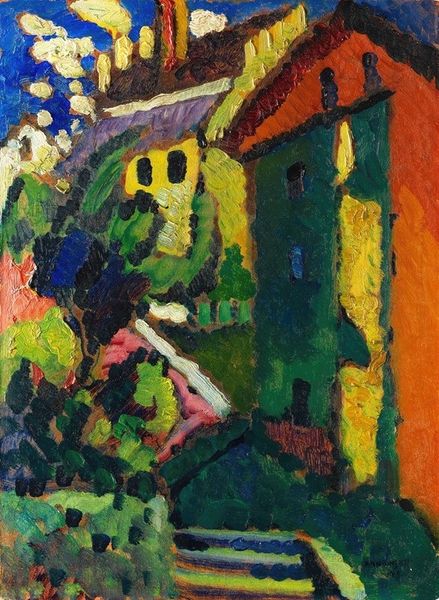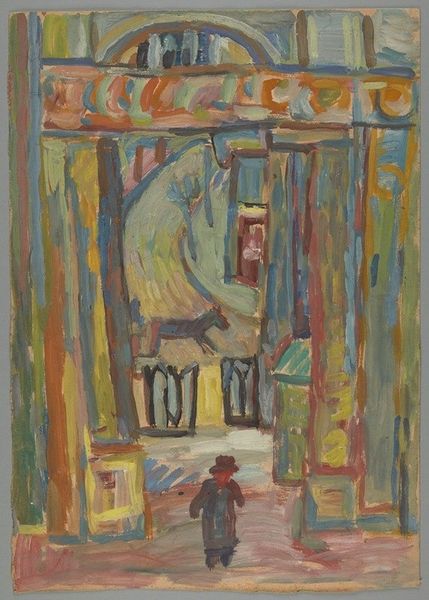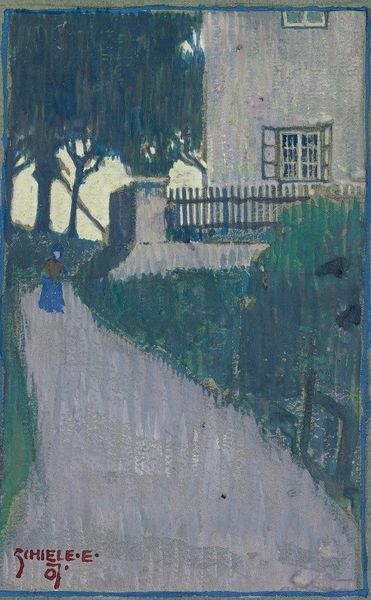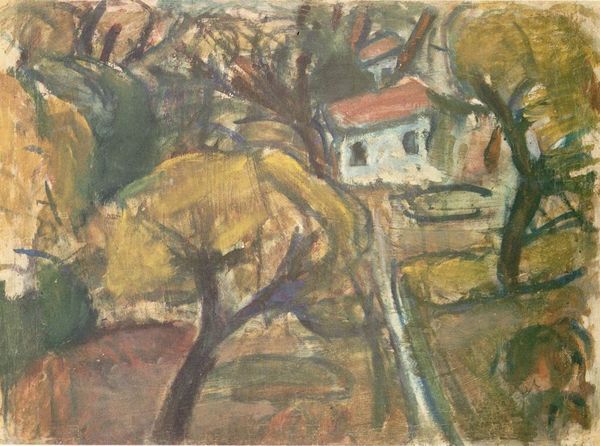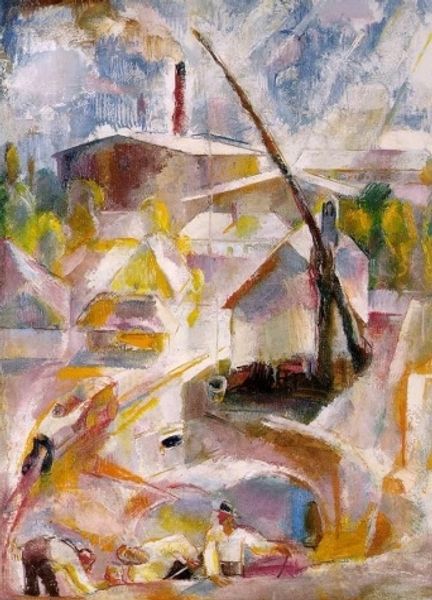
painting, oil-paint
#
painting
#
oil-paint
#
landscape
#
oil painting
#
expressionism
#
cityscape
#
expressionist
Copyright: Public Domain: Artvee
Curator: Take a moment to admire "Grape Arbor," an oil on canvas crafted around 1915 by Henry Lyman Saffen. The scene captures a view from under a grape arbor, looking out onto a landscape with buildings. Editor: My first impression is a powerful sense of enclosure and escape. The blue framing draws your eye into the vibrant greens and reds, almost like stepping into another world. It’s interesting how he creates such depth with what seem like simple blocks of color. Curator: The expressive color choices and the slightly distorted perspective mark Saffen's work as aligned with expressionist principles, common among artists interpreting urban or natural settings during that period. Editor: Indeed, I am drawn to the artist's hand and visible mark-making in the application of paint. I see that there are layers to how he represents the social interactions with domestic space. The use of these vivid colors is bold. It certainly departs from traditional landscape painting. What about you? What strikes you about this work in relation to its historical context? Curator: For me, I wonder what implications this has for Saffen's personal life, for I view him exploring the relationship between built environments and the natural world, which are the most common tropes of modernity and industrialization, especially evident during this historical period. The painting is almost like a study in contrasts. Editor: I appreciate how Saffen balances that contrast. This expressive distortion could reference his unique engagement with formal elements of color, line, and shape as a means to communicate specific emotions, such as domestic stability and even constraint. Curator: It's also interesting to speculate how his choices of oil paints reflect industrial standardization—pre-mixed colors purchased at a store becoming common for the first time around then! Editor: That's true; and how that intersects with what the social interactions of laborers at the factories or at the sites themselves had at that time is really fascinating to consider. I find myself more absorbed than I thought. Curator: "Grape Arbor" offers much more than first meets the eye! It provokes reflections on not only the composition itself but the materiality, process and environment involved. Editor: Exactly! Now, with its visual dynamics in mind, let’s journey deeper into the museum.
Comments
No comments
Be the first to comment and join the conversation on the ultimate creative platform.
